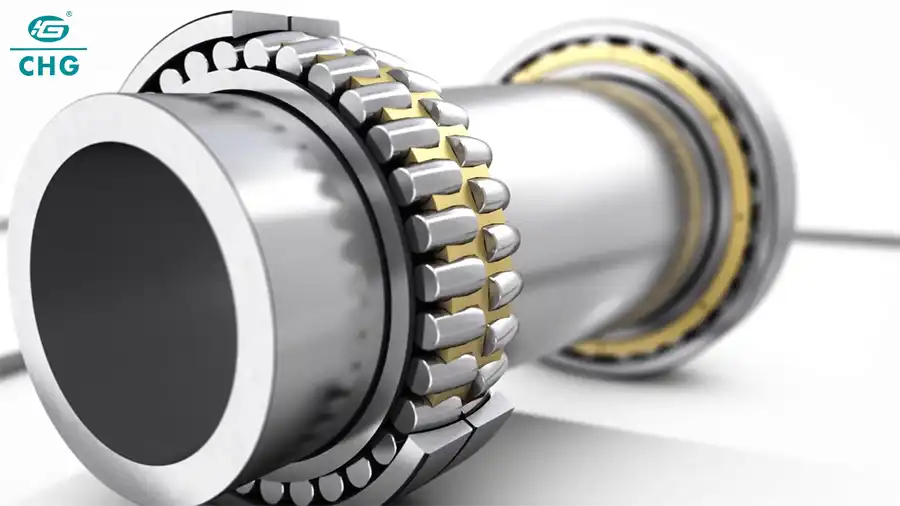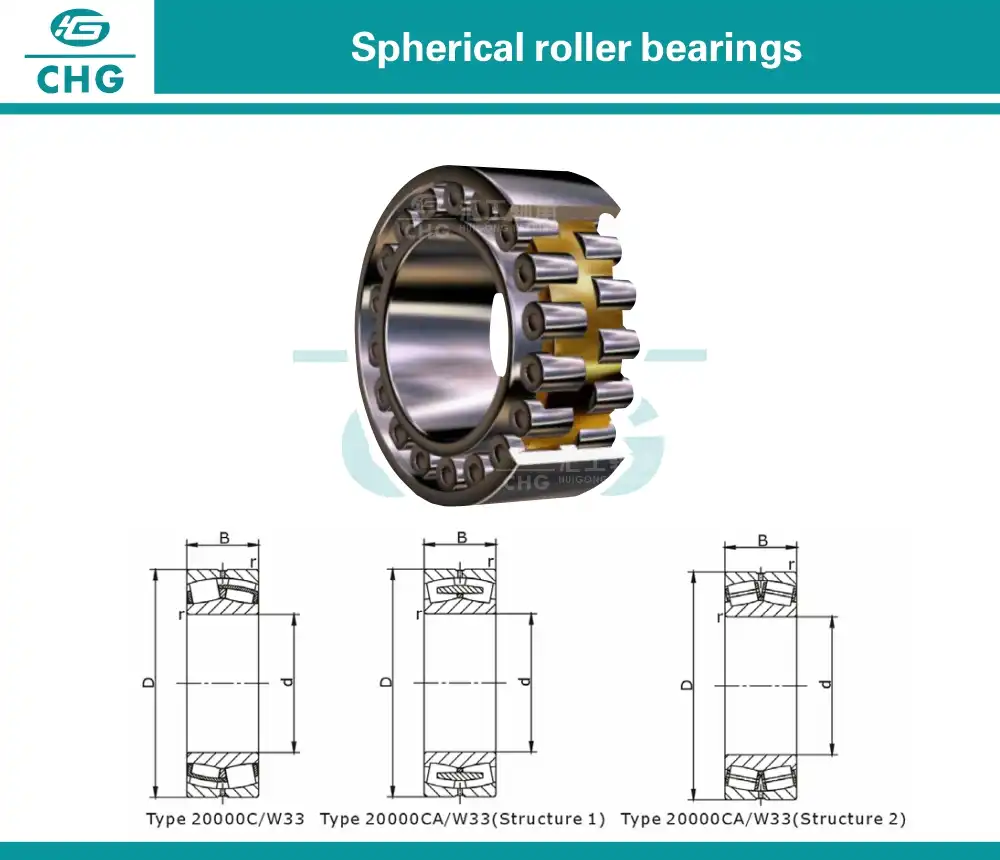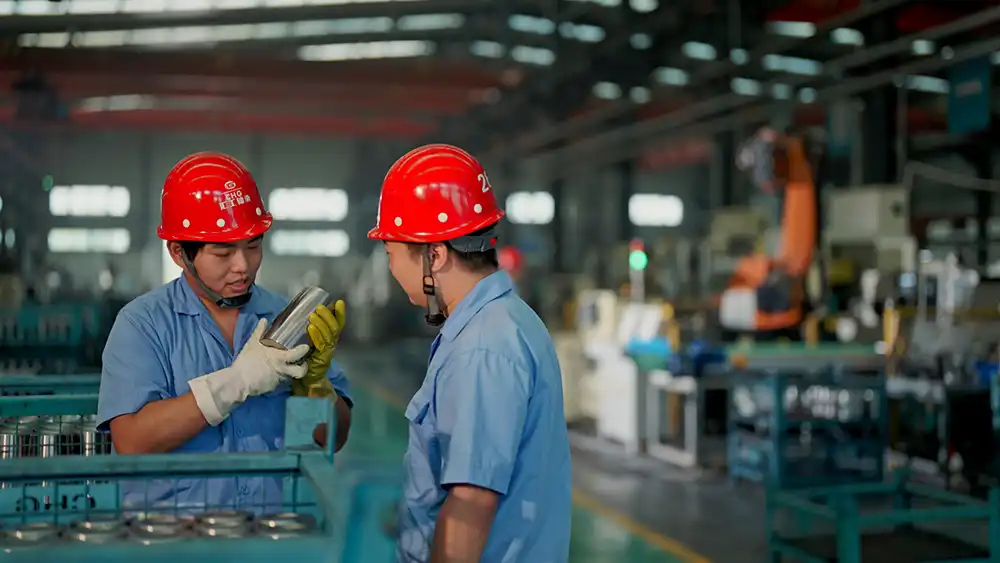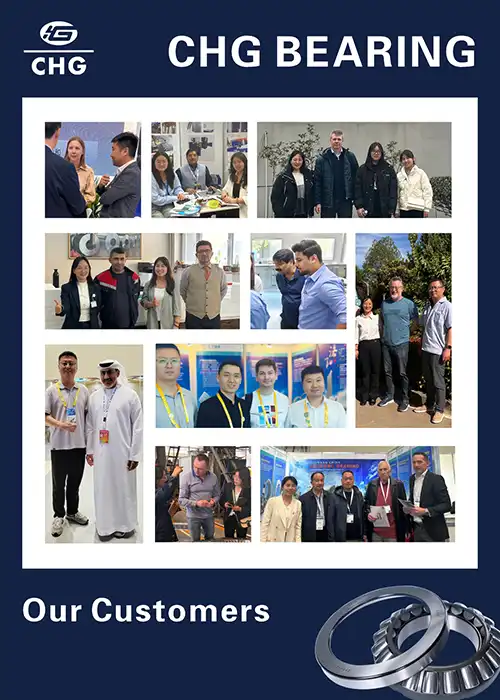How do You Choose the Right Spherical Roller Bearing for an Application?
Selecting the right spherical roller bearing is crucial for ensuring optimal equipment performance and longevity. These specialized bearings are designed to handle heavy radial and axial loads while accommodating misalignment, making them ideal for demanding industrial applications. However, choosing the perfect bearing requires careful consideration of multiple factors, from load requirements to operating conditions.

Spherical roller bearings are particularly valuable in applications where shaft deflection or misalignment is expected, such as in heavy industrial machinery, mining equipment, paper mills, and wind turbines. Their unique design features two rows of rollers that run along a common sphered raceway in the outer ring, allowing for dynamic self-alignment capabilities of up to ±2 degrees, depending on the design series.
When selecting a spherical roller bearing, engineers must first understand the application's specific requirements, including operating speed, load characteristics, environmental conditions, and space constraints. This initial assessment should also consider factors such as maintenance accessibility, cost constraints, and the criticality of the application to the overall process.

The selection process should also account for the bearing's mounting arrangement. Different mounting configurations, such as plummer blocks, split housings, or integrated units, may influence the final bearing choice. Additionally, the selection of appropriate sealing solutions must be considered early in the design phase to ensure proper protection against contaminants and lubricant retention.
What factors affect the load capacity of spherical roller bearings?

The load-carrying capacity of spherical roller bearings is influenced by several critical factors that must be carefully evaluated during the selection process. First and foremost, the bearing's dynamic load rating (C) and static load rating (C0) serve as fundamental parameters. These ratings indicate the bearing's ability to handle both moving and stationary loads, respectively.
The actual load capacity is significantly affected by the bearing's size and internal geometry. Larger bearings typically offer higher load capacities, but this must be balanced against space constraints and speed requirements. The number and size of rollers play a crucial role, as they determine the contact area between rolling elements and raceways. Bearings with more or larger rollers generally provide higher load capacities.

Internal clearance is another critical factor affecting load capacity. The selection of proper internal clearance depends on operating temperature, fit interference, and speed conditions. Too little clearance can result in excessive preload and reduced capacity, while too much clearance can lead to poor load distribution and reduced bearing life.
Material selection also plays a vital role in determining load capacity. While most spherical roller bearings are manufactured from high-quality bearing steel, special materials or treatments may be required for extreme conditions. Case-hardened steel, ceramic components, or special coatings can enhance load-carrying capacity under specific operating conditions.
Operating conditions also impact load capacity. Temperature fluctuations can affect the bearing material's properties and internal clearance, potentially reducing load capacity. Lubrication quality and quantity are equally important, as proper lubrication creates a film that prevents metal-to-metal contact and helps distribute loads evenly across the rolling elements.
Speed considerations are paramount, as higher speeds generally require reduced loads to prevent premature failure. The relationship between speed and load capacity is not linear – as speed increases, the permissible load typically decreases according to specific factors provided by bearing manufacturers. This relationship is often expressed through speed factors or speed ratings that must be considered during selection.
Environmental conditions, such as contamination and moisture exposure, can significantly impact a bearing's ability to carry loads. Proper sealing arrangements and maintenance practices are essential to maintain the designed load capacity throughout the bearing's service life.
How do you maintain proper lubrication in spherical roller bearings?
Proper lubrication is essential for the optimal performance and longevity of spherical roller bearings. The primary function of lubrication is to create a thin film between rolling elements and raceways, reducing friction and wear while dissipating heat generated during operation.
Selection of the appropriate lubricant type is crucial and depends on several factors. For high-speed applications, oil lubrication might be preferred due to its superior cooling properties and ability to be circulated and filtered. Grease lubrication, on the other hand, is more common in general applications due to its easier maintenance requirements and better sealing properties.
The viscosity of the selected lubricant is critical and must be chosen based on operating temperature and speed conditions. The base oil viscosity should be sufficient to maintain an adequate lubricating film thickness under operating conditions while not creating excessive friction due to fluid shear. Temperature viscosity indices and operating temperature ranges must be carefully considered, especially for applications with wide temperature variations.
The lubrication method must be carefully chosen based on the application requirements. Circulating oil systems are ideal for high-speed or high-temperature applications, while oil bath lubrication might be suitable for moderate-speed applications. Grease lubrication systems can range from simple manual regreasing to automated systems for critical applications.
Advanced lubrication systems may incorporate filtration and cooling capabilities to maintain lubricant quality and temperature control. These systems often include monitoring devices to track lubricant condition, temperature, and flow rates, enabling predictive maintenance strategies.
Relubrication intervals must be calculated based on bearing size, speed, load, and operating conditions. Modern bearing manufacturers provide specific guidelines and calculations for determining optimal relubrication intervals. However, these intervals may need adjustment based on actual operating conditions and experience.
Monitoring lubrication condition is crucial for maintaining bearing health. This can be done through regular oil analysis, temperature monitoring, and vibration analysis. Advanced monitoring systems can provide real-time data on lubrication conditions, allowing for predictive maintenance strategies.
Special consideration must be given to extreme operating conditions. High temperatures may require synthetic lubricants with appropriate viscosity characteristics, while low temperatures might necessitate lubricants with good low-temperature fluidity. Contaminated environments might require more frequent relubrication or special sealing arrangements.
What are the common causes of spherical roller bearing failure?
Understanding the common causes of spherical roller bearing failure is crucial for proper selection and maintenance. Poor lubrication is one of the leading causes of premature bearing failure, accounting for approximately 40% of all bearing failures. This can manifest as inadequate lubricant quantity, deteriorated lubricant quality, or incorrect lubricant type for the application.
Improper mounting procedures represent another significant cause of failure. This includes misalignment beyond the bearing's design capabilities, incorrect shaft or housing fits, and improper mounting techniques that can damage the bearing during installation. Using appropriate mounting tools and following manufacturer guidelines is essential for preventing installation-related failures.
Fatigue failure, while normal at the end of a bearing's design life, can occur prematurely due to various factors. Surface-initiated fatigue may result from poor lubrication or contamination, while subsurface-initiated fatigue typically occurs under normal operating conditions. Understanding the different fatigue mechanisms can help in implementing appropriate preventive measures.
Contamination, both external and internal, can significantly reduce bearing life. External contaminants such as dust, dirt, and moisture can enter the bearing through inadequate sealing arrangements. Internal contamination can occur during maintenance procedures or through degradation of lubricants and seals. The presence of hard particles can cause surface damage through abrasion, while moisture can lead to corrosion and hydrogen embrittlement.
Excessive loading beyond the bearing's design capacity can lead to premature failure. This includes both static overload conditions and dynamic overloads that may occur during normal operation. Proper bearing selection must account for all anticipated loading conditions, including shock loads and temporary overloads.
Operating conditions outside the bearing's design parameters can accelerate wear and lead to failure. This includes excessive speeds, extreme temperatures, and excessive vibration levels. Regular monitoring of operating conditions and appropriate maintenance procedures can help identify potential issues before they lead to catastrophic failure.
Electrical damage can occur when current passes through the bearing, causing pitting and fluting of the raceways. This is particularly common in applications where variable frequency drives are used without proper electrical isolation. Implementation of appropriate grounding systems or electrically insulated Spherical Roller Bearings may be necessary in such cases.

Luoyang Huigong Bearing Technology Co., Ltd. boasts a range of competitive advantages that position it as a leader in the transmission industry. Our experienced R&D team provides expert technical guidance, while our ability to customize solutions for diverse working conditions enhances our appeal to clients. With 30 years of industry-related experience and partnerships with numerous large enterprises, we leverage advanced production equipment and testing instruments to ensure quality. Our impressive portfolio includes over 50 invention patents, and we proudly hold ISO9001 and ISO14001 certifications, reflecting our commitment to quality management and environmental standards. Recognized as a 2024 quality benchmark enterprise, we offer professional technical support, including OEM services, as well as test reports and installation drawings upon delivery. Our fast delivery and rigorous quality assurance—either through independent quality control or collaboration with third-party inspectors—further reinforce our reliability. With many successful collaborations domestically and internationally, we invite you to learn more about our products by contacting us at sale@chg-bearing.com or calling our hotline at +86-0379-65793878.
References:
1. SKF Bearing Selection Guide (2023). SKF Group.
2. Timken Engineering Manual (2022). The Timken Company.
3. NSK Technical Report: Spherical Roller Bearings (2023). NSK Ltd.
4. "Bearing Failure: Causes and Cures" (2023). Machinery Lubrication Magazine.
5. FAG Spherical Roller Bearings Catalog (2023). Schaeffler Group.
6. "Advanced Bearing Technology" (2022). ASM International.
7. NTN Technical Review: Bearing Selection Criteria (2023). NTN Corporation.
8. "Industrial Lubrication Fundamentals" (2023). STLE.
9. "Rolling Bearing Analysis" (2022). John Wiley & Sons.
10. "Handbook of Lubrication and Tribology" (2023). CRC Press.

